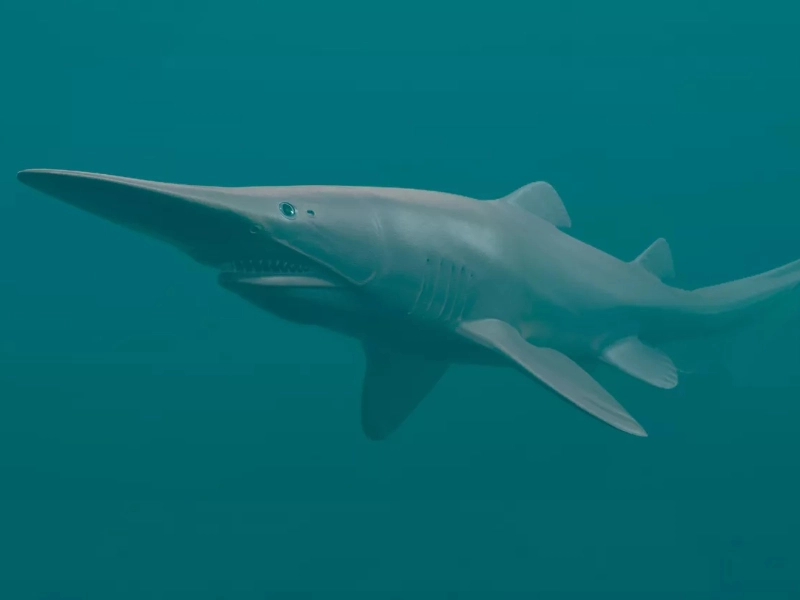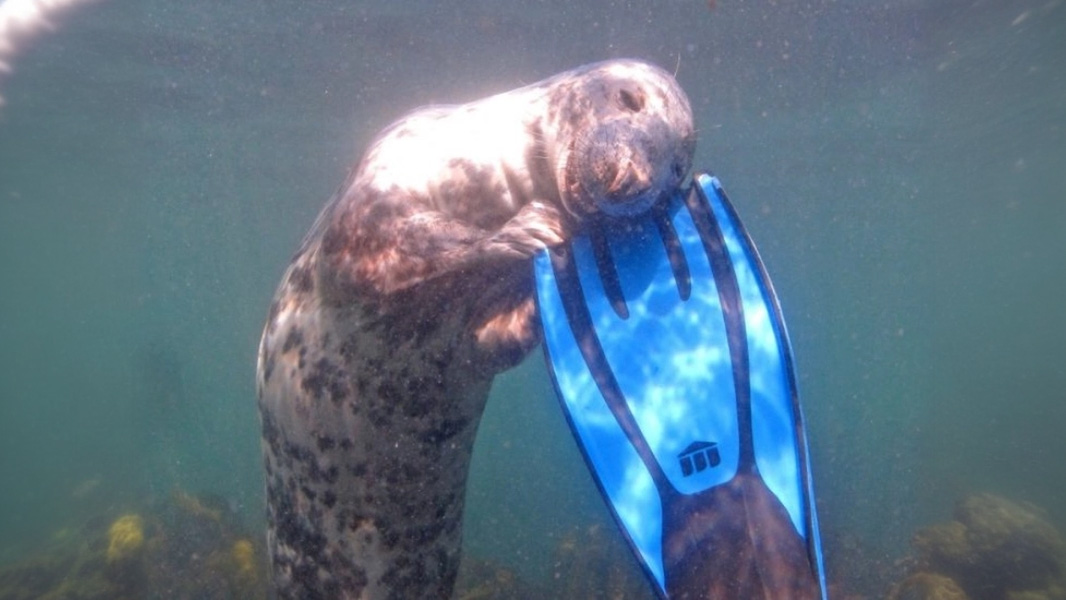8. The Goblin Shark: A Living Fossil from the Depths

The Goblin Shark (Mitsukurina owstoni) is a rare and ancient species often referred to as a "living fossil." This deep-sea predator, found at depths of 270 to 1,300 meters, has a lineage dating back over 125 million years. Its most distinctive feature is its elongated, flattened snout, or rostrum, which is packed with sensory organs called ampullae of Lorenzini. These allow the shark to detect the faint electrical signals of prey in the darkness of the deep ocean. The Goblin Shark's protrusible jaws are another remarkable adaptation. These jaws can extend far beyond its snout to capture prey with lightning speed, aided by sharp teeth and a powerful suction mechanism. Its soft, flabby body and pinkish-gray coloration help it blend into its surroundings, making it an effective ambush predator. Despite its fearsome appearance, the Goblin Shark is a slow-moving species that relies on stealth and sensory adaptations to hunt crustaceans, cephalopods, and small fish. Little is known about its reproduction, but it is believed to be ovoviviparous, with eggs hatching inside the female before live young are born. The Goblin Shark remains a subject of fascination, providing insights into the evolution and adaptations of deep-sea life.
Advertisement
Recommended Reading: 7 Subtle Signs That Can Give Away Your Age
You are viewing page 4 of this article. Please continue to page 5
























Provides a sane failure cushion.